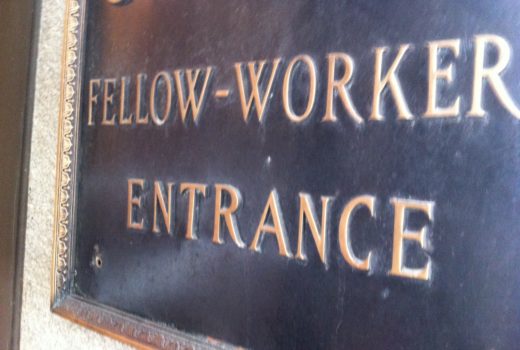 The recent decision by the National Labor Relations Board (NLRB) in the Columbia University case granting students who serve as teaching or research assistants at private universities the right to unionize dealt a major blow to private higher education as we know it. The NLRB’s cavalier disregard for the complexities of a university education is breathtaking.
The recent decision by the National Labor Relations Board (NLRB) in the Columbia University case granting students who serve as teaching or research assistants at private universities the right to unionize dealt a major blow to private higher education as we know it. The NLRB’s cavalier disregard for the complexities of a university education is breathtaking.
In a long-anticipated decision, the NLRB ruled that any student who performs services for an institution, under its control, for compensation, is a “common-law” employee entitled to unionize under the National Labor Relations Act. The NLRB’s sweeping decision lumped together undergraduates (who may serve, for example, as graders and discussion leaders), master’s degree candidates and PhD candidates in its definition of employees. The decision ignored the fact that many students must serve as teaching assistants or research assistants as part of their master’s or PhD degree requirement, even if they would otherwise not want to do that “job.”
The decision’s lone dissenter, Republican Philip A. Miscamarra, anticipated that the strikes and other economic weapons that often accompany collective bargaining “will wreak havoc” and may have “devastating consequences” for higher education, particularly for the students who are trying to earn their degrees.
His dire prediction is not a case of crying wolf. Experience tells us that the adversarial process that is baked into the structure of collective bargaining will profoundly change the culture of campuses whose students are organized by unions. Unlike public-sector collective bargaining that is governed by individual state laws which typically prohibit strikes, the National Labor Relations Act anticipates that the process of collective bargaining will be fraught with adversarial positions that, if not settled amicably, often lead to strikes, lockouts and the replacement of workers.
The U.S. Supreme Court long ago stated that that “the principles developed for use in the industrial setting cannot be ‘imposed blindly on the academic world,’” because the interests at stake in the academy are different than those in an industrial workplace. Despite this observation, the NLRB ruled that the industrial model of the National Labor Relations Act is appropriate for private-sector campuses.
The consequences of this decision cannot be underestimated:
- For the first time in our nation’s history, students at unionized campuses who are given the opportunity to teach or do research as part of their degree program or university experience will have to join a union or pay an agency fee in order to obtain their degree. This will transform an educational experience into a mere job.
- Also for the first time in our history, research assistants—virtually all of whom in the hard sciences are required to engage in research and produce original results in order to write their dissertation—will be considered employees whose wages, hours and other “terms and conditions of employment” will be subject to bargaining on unionized campuses. This will transform the very purpose of their education into a job about which an outside union can insist on bargaining.
- Disputes about what constitutes “wages” will require years of litigation, since the NLRB’s decision identified the stipends typically awarded to graduate students at elite institutions as wages where the requirement of teaching or research is embedded into the curricular requirement for such students.
- The identification of proper subjects of bargaining will produce lengthy and complex litigation that will typically last far beyond the tenure of the students affected by those disputes. Will issues such as how many papers a teaching assistant has to grade; who will be awarded assistantships; and how many students should be in a section be considered “terms and conditions of employment” that must be bargained with a union? The distinction between mandatory subjects of bargaining and the strictly academic issues about which universities would not have to bargain will test the limits of universities’ academic freedom. The often-Byzantine rules imposed by the NLRB on employers will now be engrafted onto unionized campuses. The NLRB has aggressively invalidated typical work rules, such as civility rules, because they allegedly chill employee rights to engage in “concerted” activity. NLRB decisions also routinely find that employees may lawfully insult and demean their supervisors and managers as part of concerted activity. As a result, many standard campus rules may become unlawful if applied to unionized student assistants. Identification of who is an “employee” will inevitably morph into claims by unions that members of sports teams on scholarships, members of orchestras who receive stipends to go on tours, and similar student groups should be entitled to bargain about their stipends and terms and conditions of employment because they are “common-law employees.” Although the NLRB sidestepped this issue in 2015 when it declined to assert jurisdiction over Northwestern University football players, the Columbia University decision is broad enough to encompass these activities.
Private university administrators have a new, unfortunate landscape confronting them. Hopefully the NLRB’s decision will eventually reach the courts, who may bring common sense to this misguided result. Congress also may have a role in limiting the harm that will likely result from the decision. But make no mistake: This stunning decision will, if unchecked, forever change our private universities. Like it or not, applicants will no longer be “admitted” to unionized institutions; they will be new hires, no different in many respects from hourly workers in industry.
Joseph W. Ambash is the regional managing partner of the national labor and employment law firm Fisher Phillips.
Related Posts:
Student Unions: The Implications for Colleges and Universities
Key NLRB Decision Opens a Wide Door for Faculty Organizing
Is the Northwestern Decision a Wake-Up Call for Higher Ed Institutions?
Higher Education Needs a Dialogue with the 99%
[ssba]
